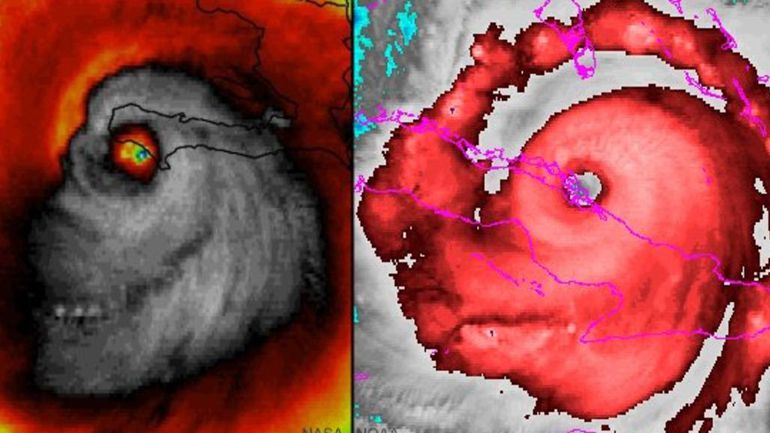Hurricane Hector passed well south of the Big Island of Hawaii on Wednesday as a major hurricane, one classified as Category 3 or higher on the Saffir-Simpson Hurricane Wind Scale. Hector generated high surf and breezy conditions on the Big Island, with no more than a few outer rain showers scraping portions of that island.

As of Saturday morning, Hector was still maintaining Category 3 intensity about 1,000 miles west of Hawaii. That means it had been a major hurricane for at least 7.5 consecutive days, the longest duration any hurricane in the northeastern Pacific Basin has held that intensity.
#Hector has now been a major #hurricane for 7.25 consecutive days – the most consecutive days as a major hurricane for any storm in the Northeast Pacific (to 180°) on record. Old record was Norbert (1984) at 7 consecutive days as a major hurricane. pic.twitter.com/wAE16b2A5d
— Philip Klotzbach (@philklotzbach) August 11, 2018
The previous record was held by Hurricane Norbert, which was a major hurricane for 7 consecutive days in the northeastern Pacific in 1984.
Hector also generated the most Accumulated Cyclone Energy (ACE) of any northeastern Pacific hurricane since Dora in 1999. A hurricane’s ACE value is calculated by adding up its wind speeds through its life cycle. Long-lived, intense hurricanes have a high ACE index while short-lived, weak tropical storms have a low value.
Now, it seems that the Northeast Pacific (to 180°) has already generated more Accumulated Cyclone Energy in 2018 than it did in all of 2017.
The Northeast Pacific (to 180°) has already generated more Accumulated Cyclone Energy in 2018 than it did in all of 2017. #Lane pic.twitter.com/ArTxV591fW
— Philip Klotzbach (@philklotzbach) August 15, 2018
While there has been some recent anomalous warming, tropical Atlantic (10-20°N, 60-20°W) sea surface temperatures (SSTs) are still the coldest for mid August since 1994. And cooler tropical Atlantic SSTs tend to suppress hurricane formation.
While there has been some recent anomalous warming, tropical Atlantic (10-20°N, 60-20°W) sea surface temperatures (SSTs) are still the coldest for mid August since 1994. Cooler tropical Atlantic SSTs tend to suppress #hurricane formation. pic.twitter.com/6KJJgDtfjG
— Philip Klotzbach (@philklotzbach) August 13, 2018
But let see what will this really means. Ernesto is the 3rd consecutive Atlantic named storm to form north of 30°N. The last time that 3 consecutive Atlantic named storms formed north of 30°N was in 2012.
#Ernesto is the 3rd consecutive Atlantic named storm to form north of 30°N. The last time that 3 consecutive Atlantic named storms formed north of 30°N was in 2012. #hurricane pic.twitter.com/u8MyPxnZgs
— Philip Klotzbach (@philklotzbach) August 15, 2018
Hopefully, the Atlantic Huricane season will not end like that of 2017… Terrifying!
Follow us: Facebook and Twitter
The Weather Channel – 4 Interesting Things We Saw in the Tropics in the Past Week













[…] https://strangesounds.org/2018/08/weather-anomalies-hurricane-hector-atlantic-hurricane-season.html […]